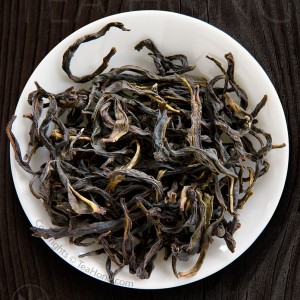Modified Teas: Orientation
So far, we have covered most of tea categorization basing on the degree and style of fermentation as the plucked tealeaves undergo one of the 5 major production methods. I have invented the idea of a 6th category so as to encompass all other tea varieties that would go through further processing which modifies their characters, such that the whole categorization concept fits in a consistent logic.
What are modified teas?
Some tea varieties are modified after production, i.e. after the tea is processed according to one of the 5 tea categories as described in the related articles in this section. The original nature of the tealeaves is thus altered. Some to only a small extent, but others quite dramatically. There are writers or scholars who present such teas as further separate categories, or varieties under the original category.
The change of nature often involves not only of the appearance, but also of the taste and infusion characteristics or even the biochemical nature of the tea. It is, therefore, not quite accurate to group them under the original production category.
Furthermore, most of the modification treatments may be done to most varieties from any of the 5 major categories. For example, modification by scenting with flowers can be done to a green tea, an oolong, or a black tea. Therefore, it is logical to look at them as one separate category basing on the modification.
There are generally 6 treatment approaches in producing modified teas:

Xu Ri Dong Sheng 旭日東昇, a crafted tea made with apical dabai green tea and the flower of globe amaranth.
Crafted teas
Certain teas, mostly greens, are wet to soften to form into pearls, flowers, or other fancy shapes both for appearance and as a form of package for convenience in steeping. Some people in the trade call them textured tea. Some of these are subsequently scented with jasmine, other flowers, or extracts. <more>
Compressed teas
Some sun-dried teas, post-fermented teas, black teas, white teas, and oolongs are steamed to soften and compressed into moulds to form various discus, brick, bowl, tablet, morsel or bar shapes as a form of packaging for distribution, maturing storage or steeping convenience. In ancient times, these compressed forms doubled as a trading currency in certain areas along the Silk Road. Today, some is also used as a form of collection or speculation. <more>
Scented/flavoured teas
Various single origin productions or blends can be modified by scenting or flavouring with flowers, fruit juices, spices or other materials. Jasmine, Earl Grey, Masala Chai, Milk Oolong, Ginseng Puer, Lychee Black Tea are some of the popularly known examples.
Some varieties also include bits of flowers, fruits, grains or herbs to give visual gimmickry and/or added taste. Examples are various fruit teas, genmaicha, and teas with flowers. Producers, importers and distributors may also spray them with fragrance or flavouring agents, and give the products fancy names.
We shall discuss those that are scented with fresh flowers, and that are finer teas here in this site. <more>
Blended teas
Blending is done to improve taste and taste consistency for some of the commercial grades. Productions from various sources are mixed together under certain proportions to form the character of a certain “blend”.
All teabags and most loose leaf selections in the supermarket are blends. Teabags are mostly fanning or dusting grades made from mowings. As for loose leaves, when there is no specification on the tin naming the single plantation or tea farm, even if it says Darjeeling, Assam etc, you can be pretty sure that the tea is blended by mixing various production batches from the collective region. A very large proportion of loose leaf black tea available in the market are broken grades and also made from mowings. Blending is also not uncommon in most commercial grade green teas, oolongs and all others. That includes labels as sencha, tieguanyin, puer etc.
Powdered tea
Most finer teas before 12th century were in the discus form and they needed to be chipped out and ground into a powder before it can be decocted with water to form a drink. In the old days people would pulverize the chips when they make tea; now the grinding is done before the tea is packed into the bag for the supermarket, with the exception of some very fine tencha that is served in certain exclusive Japanese tea ceremony.
Most powdered tea products in the market are labelled as Matcha, and they can be made from various quality grades and origins. They are used in different occasions in addition to being drunk as tea, such as flavouring and food colouring.
There are other products in the powdered form but are not ground tealeaves. Extracts made from tea plant materials are made into instantly dissoluble granules or powders. Most are flavoured with further additives. Lemon ice tea mix is an example.
The fact that such products are popular even for the simplicity of making a much tastier and healthier drink through properly steeping a leaf tea reflects a certain mentality of the current human civilization that needs some serious discourse. Those people who argue that it is bothersome to have a separate set of ware for preparing tea with can look at the alternatives in the infusion guide section in this site.
Ready to drink
Tea extracts and various other additives, such as flavouring agents, colours, sweeteners, stabilizers, preservatives, etc, are dissolved in water to package into this kind of products. Their makers have profit margins for huge marketing and advertising budgets to persuade people into drinking them and thinking them as good. There are other issues beyond the cost on your personal health in consuming such drinks. While we have no other choice in packing and distributing some other products such as milks, the environmental impacts of packing and distributing what basically is 99% water is morally questionable.













